#like not being funny what’s the small rural village i live in going to contribute to the nhs by clapping
Text
weird that we don’t talk about clap for carers anymore like we all just stood outside in the cold clapping for the nhs every thursday as if that wasn’t fucking strange
#and it’d be the first time we’d seen our neighbours in days lmao#god i fucking HATED doing this and my mum did too but she was like ‘we have to show face’#like not being funny what’s the small rural village i live in going to contribute to the nhs by clapping#in fact what did ANYONE contribute by clapping#bojo said no i will not support the nhs but I’ll give them a lil round of applause#no i won’t brush my hair for it though#weird fucking times man lockdown was a fever dream
22 notes
·
View notes
Text
A brief beginning
I guess to start I should give a bit of background.
I was born in Cornwall and lived in St Mayben until I was 5. We lived in a 2 bedroom bungalow in a could de sac on top of a small hill. At the time we had a view of a field filled with sheep, but that soon changed to a housing development. I also have memories of swinging on the washing line before my parents were awake, the squirrels we kept (that would bite my fingers when I’d tried to interact with them) and being sick on the laminate flooring from eating too many yoghourts after my mum had freshly mopped the floor. There’s also memories of getting chippy and watching The Weakest Link.
My parents then decided to join everyone on the Spanish Dream (similar to the American Dream, just closer, less faff and idealistically cheaper) which involved moving abroad and starting fresh. They had a dream to buy land and build a home from scratch, my parents didn’t have a lot and wanted the best for us; at the time that seemed best. We moved with a big lorry, our whole life’s belongings travelled with us from Cornwall, through Dover to the south of Spain. It took some time, I can’t remember how long but it was definitely a process. A memory that sticks with me was somewhere in the north of Spain, we were staying on a cliff overnight and it was so incredibly windy we could hear the lorry rocking across the road which left us all uneasy the whole night. There were a few other stops, which I’m sure will come out in future posts but it was certainly a journey.
We landed in the south, again with a few more stops which I’ll write about at some point. My parents decided to buy a ruin in Los Peraltas, a very very rural area in the south of Spain. This building was such a ruin we couldn’t live there for a long time, and with that my parents decided to buy a caravan. As a part of all of this I remember we made a trip to the local pub for a break and some snacks, and my 5 year old self decided to run into the road (god knows why, I was 5) and that was a whole thing in itself. I have fond memories of making cement for the ruin and feeling like I was really contributing to the project (I doubt I was). On top of all of this, my parents decided to buy a couple of horses and a donkey (again, stories I’ll get into later) and put the caravan next to the house so we had some sort of living situation.
Prior to this, we lived in an apartment in the local village of Arboleas. My parents rented a flat whilst making our ruin somewhat liveable, and the people who rented out that property had a son named Joe, who ended up being one of my best friends nearly the whole time I lived in Spain. We also very nearly got carbon monoxide in that apartment due to a gas heater, luckily someone recognised the signs and we’re all still here. Other fond memories include a lamp being smashed by accident and my mum telling me not to tell Joe which is funny now.
My parents really went for it in Spain, as I mentioned before they decided to get horses as my dad had an interest in them and wanted us to have them. My mum also had dreams of having farm animals so it just made sense. We had a rural home with land, what could go wrong? Everything, apparently.
None of this was long lived unfortunately. Money isn’t limitless, and my dad was/is an alcoholic so it’s probably best the dream didn’t involve too many animals. The house was a project, and like Rome, wasn’t going to be built in a day. It’s still an ongoing project to this day - to me at least.
I proceeded to live in Spain until I was nearly 16, I enjoyed school but struggled with the language initially, bullying and lack of finances I was far too aware of. It was a hard time with lots of changes including my parents separation, my older sister moving out and again financial difficulties that seemed to plague the household. I will delve into this much more at some point, but despite all of it I focused on education and keeping out of the house when I could - not necessarily in the best ways.
Kirsten x
1 note
·
View note
Text
The Funniest Movie of the Year Takes Place at the 'Science Fair'
New Post has been published on http://funnythingshere.xyz/the-funniest-movie-of-the-year-takes-place-at-the-science-fair/
The Funniest Movie of the Year Takes Place at the 'Science Fair'
The top prize is announced at the 2012 Intel International Science and Engineering Fair, and then-15-year-old Jack Andraka learns that he won for his work on the early detection of pancreatic cancer. It is beautiful, shocking, hilarious pandemonium.
His Bieberesque mop of brown hair billows as he explodes out of his seat like a Jack-in-the-box, his limbs extending into a perfect star shape, each extremity perhaps stretched even longer by his euphoria.
What follows is a full-body emotional meltdown. His face contorts as if altered by Edvard Munch. He runs down the aisle to claim his prize. No, not runs. Skips. Flits? Floats? His hands curl in fists as he unconsciously pumps his arms with each step, flapping as if trying to take flight—the only possible physical reaction befitting the sheer amount of joy the teenage genius feels.
He is screaming—shrieking—like a One Direction fan in the front row of a concert. He is screaming like it’s August 1965 and he’s at Shea Stadium watching The Beatles. He is screaming for himself.
Rightfully so.
Jack Andraka is a superstar in his own right, one of many we meet in the documentary Science Fair, which is in theaters now. As Jack’s win in the opening scene proves—you can watch it in the trailer below—it is perhaps one of the most surprisingly funny films released this year. (To wit, it took home the audience prize at both the Sundance and SXSW Film Festivals.)
Directed by Cristina Costantini and Darren Foster, the National Geographic Films documentary shadows a handful of the most intelligent young scientists, inventors, inquisitors, and experimenters in the world as they train for their Olympics: a trip to the International Science and Engineering Fair. The result is like being a fly on the wall for the making of a Christopher Guest movie.
These are some of the most brilliant young minds in the world—the filmmakers follow students from American magnet schools, a village in rural Brazil, and an enterprising inventor from Germany. Their personalities, which you might not guess if you only remember the reserved science geeks tucked away in quiet corners of your own high school cafeteria, turn out to be as big as their minds.
“Teenagers have this amazing quality of figuring out who they are in real-time, but then science fair kids have a whole different quality, which is they’re brilliant,” Costantini says. “They’re going to be the scientific leaders of tomorrow, but they’re also just teenagers.”
There’s Harsha, a senior at Kentucky’s duPont Manual High School, a magnet school known for its STEM program. He’s the drill-and-kill taskmaster for his group project with friends Ryan and Abraham. In one scene, he’s berating them to be more prepared for their presentation. In the next, he’s in the car blasting trap music. “Harsha only listens to trap music, which I didn’t see coming,” Ryan laughs. When we see the trio on the plane to Los Angeles for ISEF, Ryan and Abraham are passed out and miserable; their prom was the night before.
Their classmate Anjali is a prodigy in her own right, who speaks with the plucky, unapologetic confidence of a member of the YouTube generation. Whether she’s throwing shade at the size of one of her trophies, speaking truth to the gender bias that comes with her success and aptitude, or navigating the politics of science fair competitions with blazer-wearing certitude, she’s a trip.
Robbie, who goes to a small high school in West Virginia, is a math genius who scavenges junkyard to build the computers from which he writes revolutionary algorithms. But nothing about his personality reflects the typical science fair student, or even a student who fits into the traditional academic framework. There’s his bright-color, bold-pattern wardrobe of flashy button-up shirts, or the fact that he’s nearly failed out of high school despite his irrefutable smarts. His hope is that a win at ISEF could help his poor college prospects, due to his grades.
“They’re going to be the scientific leaders of tomorrow, but they’re also just teenagers.”
— ‘Science Fair’ co-director Cristina Constantini
And halfway around the world there’s Myllena and Gabriel, who live in one of the poorest states in Brazil and whose research is inspired by their desire to do something to stave off the health crisis ravaging their community, by identifying a protein that could inhibit the spread of Zika. Attending ISEF means the trip of a lifetime from Brazil to Los Angeles, but also a platform to perhaps escape the poverty of their hometown, as well as save lives.
“I think there’s a temptation sometimes when you’re making a film about science to make these kids seem superhuman,” says Foster. “Obviously they have some brilliance to them, but at the end of the day, they’re just teenagers.”
Science Fair is a personal project for Costantini. A self-proclaimed “dweeby kid growing up in a sports-obsessed high school in Wisconsin,” it wasn’t until she competed herself at the ISEF in 2004 that she felt like she had found her tribe. “I was finally validated for my ideas,” she says. “At a young age, that was really important. It really changed who I was.”
The sense of ISEF as a haven is one of Science Fair’s most endearing threads, illustrating the transformative power of gathering misfits in a shared space of understanding and appreciation. In the Rudolph the Red-Nosed Reindeer film, the misfits saved Christmas. In Science Fair, they may just save the world.
You see this most poignantly through the story of Kashfia. She is the only Muslim girl at her sports-obsessed high school in Brookings, South Dakota. There is no science program to speak of; she has to ask the school’s football coach to serve as her science fair mentor. His blank, silent stare as she explains her project to him speaks volumes. She’s placed at international science fairs before, and didn’t get so much as an announcement about her success at her school. (Light spoiler here…) When she scores a major prize at the end of the film, her victory goes unmentioned again.
“It’s heartbreaking,” Costantini says. “It’s not just South Dakota, and I’m sure it’s not out of malice. They just don’t know what a big deal this is. I think our priorities as a nation, especially right now, need some help.” Those priorities provide the crucial, though largely unspoken backdrop to the movie, italicizing, for all of its fun and the adorableness of these kids, its resonance and, hopefully, its impact—the “why we need this movie now” of it all.
“Teenagers have this amazing quality of figuring out who they are in real-time, but then science fair kids have a whole different quality, which is they’re brilliant.”
— ‘Science Fair’ co-director Cristina Constantini
These are kids picking up the mantle of science at a time when there’s a palpable feeling that our country, or at least under this administration, is turning its back on science. More, state budgets for science fairs are being slashed in certain parts of the country and at risk in others, meaning the necessary platform for fostering these kids’ interest in and enthusiasm for science might disappear, and with it the innovation and intelligence capital the future of our country needs.
Costantini and Foster struggled with how to address all that in a film like this. “We decided, let’s not saddle these kids with all these political arguments,” Foster says. “Let’s just let these kids be who they are and stand in relief to what’s going on in the country.”
And those kids do stand in stark relief, along with the many superhero STEM women profiled, or the charges of magnetic Long Island teacher Dr. Serena McCalla, who sent nine of her young immigrant students to ISEF, most of whom speak English as a second language.
“It’s hard to do a movie about science and the science fair in America without addressing the contributions of immigrants,” Foster says. “It’s impossible to do it without talking about the contributions of women. It’s also impossible to look at this moment in time and not see how science has slipped as a national priority, especially compared to the time when the science fair first started in this country, which was in World War II, and then in the ’50s and ’60s when we were facing these huge global challenges and we turned to science for answers. Now we live in a political environment where science is undermined and questioned for political gain. All these things came out during the making of the film.”
But the film’s beautiful, beating heart is these kids. What was it like, then, to follow them for so long, from their hometowns all across the world to the awards ceremony at ISEF, where a handful of them took home prizes for their hard work?
“I was weeping,” Costantini laughs. “During the awards ceremony I was roaming around trying to get shots with the camera,” Foster says. “My eyepiece was fogging up a bit…”
Emotion is one thing. But what about the science? Since it might be a question of concern to prospective viewers, we asked the filmmakers themselves: Did you actually understand the kids’ science experiments? They answer in unison, and with a humble chuckle: “No!”
Source: https://www.thedailybeast.com/the-funniest-movie-of-the-year-takes-place-at-the-science-fair
0 notes
Text
Expert in fisheries and the plague
Hello my friends and family!
Habari za mvua? Or: how is the rain? The question of the day, because it has been raining for 1,5 days, and if I say rain I mean rain. Half the city is already flooded, I heard of parts of the road that are completely closed, and houses that have been flooded. One big adventure for me, but the part where I live is of course one of the richest neighbourhoods in the city. And this is only day two of the small rainy season, so I am curious what the big one will be like. They call these the mango rains, so at least we can console ourselves with the thought that we will soon have mangos every day.
So, how is everybody doing? I know I am terrible at skyping with everyone and answering all emails and messages, sorry about that. Previous times when I was abroad I had much more time, but life is just so busy here (which is no excuse I know). So let me try to give you a little glimpse of my life now. Last week I spent house- and dog-sitting for one of my colleagues, who was on holiday. And we all know what that means: huge expat house, pool, GOOD coffee machine and a cute dog! In other words: pool parties all week, I definitely increased my popularity levels (ha ha) and I did not know what to do with the embarrassing number of empty bottles by the end of the week. ;) Tried to hide them in the cleaning closet, didn’t work haha. But for real, it was wonderful to stay in a cosy and well-furnished house, with a comfortable couch and a big garden. Although the guards showed a little bit too much interest in me, I managed to keep them at distance. ;) I have also gotten a second housemate in my apartment, Deborah. She is from Tanzania and plans to go to the Netherlands soon, and it is fun to have someone else around! Oh, and I have a weekly Swahili class now, with three friends, so Monday from 5-7 we sit in this small room in a tiny language school, and get taught by a very patient and enthusiastic teacher, Msigaro. It is a lot of fun (although a Monday lasting from 7-7 is quite long) and we are definitely making progress, but the verbs are becoming very complicated. They basically manage to squeeze the entire sentence into one long word, so to try and figure that out is quite the challenge when the Tanzanians are always speaking at top speed. Swahili is a funny mix of Bantu (a group of African languages), Arabic, and a bunch of others. Especially the words derived from English are my favourite, because they put an i behind everything: lefti? Righti? Paty? Waini!

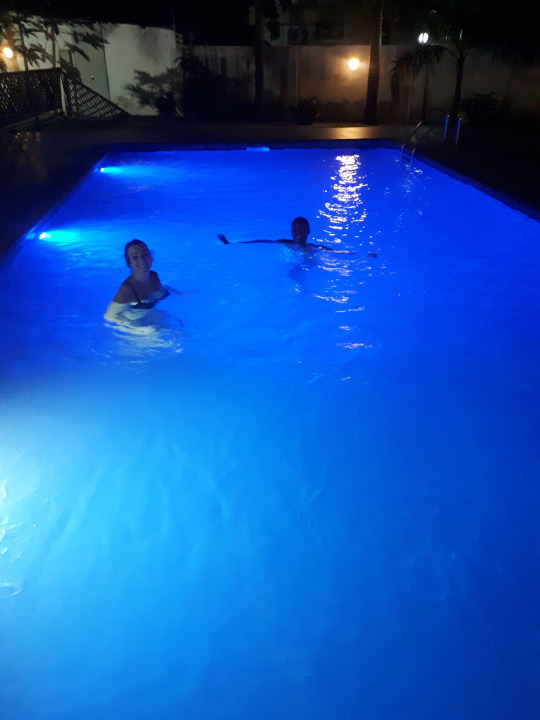
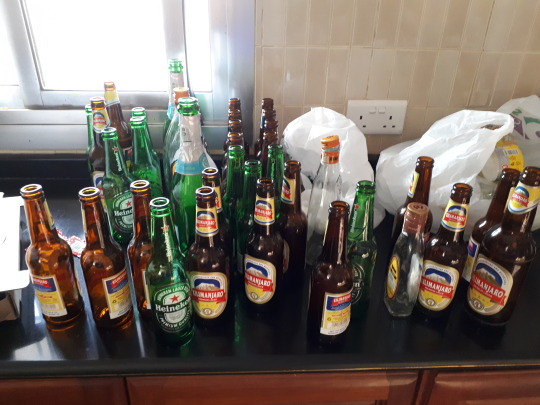
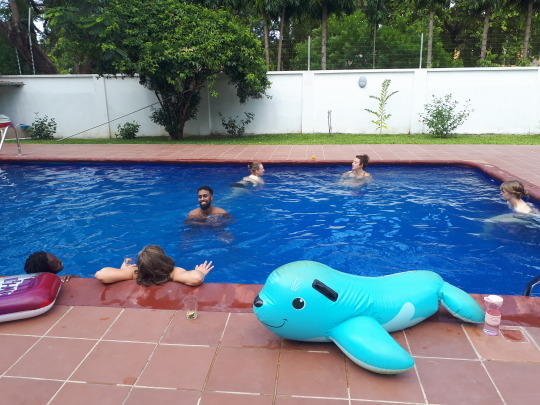

Things at the Embassy are going well. The most important news is that our Ambassador has presented his credentials to the President yesterday, so we are officially represented again! A good reason for us to eat cake. It had already been planned before, on a Sunday at 8 AM, but I guess the President decided he did have to go to church in the end. In the meantime, we have been working on a hundred different things. Our annual plan has been written and is now awaiting approval from The Hague. I have been gathering information about Madagascar, where the plague has broken out (yes, the one from the Middle Ages), to update information on the website. I can thus now proudly say I am a plague-expert. I have also been working on the Netherlands’ contribution to Mauritius 50-year independence, on a human rights movie event, and I went to a workshop about waste management. Perhaps I already said this before, but one of the projects the Embassy is assisting in, is the improvement of Dar’s waste management infrastructure. The biggest landfill will (hopefully) be rehabilitated, which will make it healthier for the people living and working there, and recycling facilities will be introduced. The workshop was about how to change people’s behaviour, via incentives and nudging. I think that’s a fascinating question, if you consider people’s behaviour regarding waste here: they throw everything on the ground. There is no education about this, so the difference between a banana peel and a plastic bottle is really no common knowledge. So often I have been in a car and the driver will just throw his plastic waste out of the window. Or sometimes you can’t swim in the sea because it is so dirty and smelly. It is just such a different perception than we have, and so difficult to change or even grasp. But very necessary nonetheless. Oh, and of course, I have been working on a sustainability project for the Embassy! As part of the Rank your Embassy-initiative, a ranking between Dutch embassies worldwide, I interviewed all staff-members and wrote an article about it (which will soon be online). I also prepared a powerpoint presentation about our sustainable practices, so for a week I made people walk the stairs and eat less meat and recycle. Some of the expat staff now even walks once a week to the Embassy, and we try do carpooling (aka me forcing people to give me a ride). The Ambassador presented the presentation at the regional conference in South-Africa, and now all embassies in the region will participate! The next step is of course to keep up our good behaviour, so we will have a group session about this.
Political developments in Tanzania are interesting, though not always encouraging. As you might have seen in the media back home, again a group of people associated with homosexuality has been arrested. The same happened in Zanzibar last month. Charges are “promoting homosexuality”, because the latter group was for example following a workshop on HIV/AIDS. Several HIV clinics have also been closed, so that’s not too good news. Also, schoolgirls who become pregnant are not allowed to return to school anymore. This because they would give a bad signal to other girls, and would not be able to raise their child and continue their education. Only vocational training will be allowed. I had an interesting conversation with an Uber driver about these issues, who was saying with regard to the school girls that it was perfectly fine because they can still go to private schools. Which of course hardly anyone can pay for. Plus they shouldn’t seduce men all the time. Often, girls living in rural areas have to walk for long distances, and get offered a ride by a boda boda (motor) driver. But only in return for something. It is so unfair that they are punished for this! About homosexuality, it was his opinion that people who stay single, choose to become homosexual (or lesbian), thereby choosing to not be a man anymore. So, what more to say. This is just one opinion. Sometimes the things happening in this country are insane and hard to wrap your head around. Because what about the people who have albinism, who are still being hunted and whose body parts are chopped off for spiritual beliefs? Or the elderly widows living in villages, who are believed to be witches (your eyes turning red is one of the signs for this), and are killed? Of course, many things happening are very positive and the economy is growing and all, but these are the human rights issues that fascinate and astonish me. And it touches upon the debate that we constantly had in my human rights classes last year: what is acceptable and what is it, till what point do you meddle in other cultures, or when are you imposing your own views?

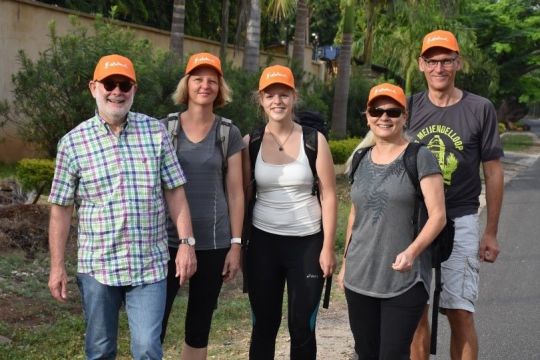
Although it is already some time ago, I also joined on a scoping mission for marine fisheries and aquaculture! Scoping mission scoping mission, what? This is done in preparation of a trade mission, when Dutch companies will visit a country to look for business opportunities, to explore and map out the sector. And somehow, thanks to my amazing colleagues, it was decided that it would be a good idea if I joined! Because next to being a plague expert, you of course all know me as the mastermind of marine fisheries and aquaculture (not). But it was so much fun, and it taught me how cool it can be to delve into a topic that is completely different than your field, but can be interesting nonetheless! Tanzania has a very long coastline, and a bunch of huge lakes, so the question is why the fishing industry has not yet developed that much. Together with Ulrich, our Economics/Trade Officer, and Rik, a trainee from Nairobi, we visited two companies in Dar es Salaam. Funnily enough, there was not one fish to be found in their factories. ;) Turned out it was the low season (the sea is too rough), so just small amounts of fish get processed. If I talk about fishermen, by the way, don’t imagine too much. The few big companies do have fleets, but most fisherman are just guys on surfboard or a tiny tiny boat, who try to catch a fish with one thin line. Or you will see these small wooden boats with 50 people in them, who look like they might topple soon. In some of the coastal areas, there is also a lot of overfishing, disturbing the balance of the ecosystem, and dynamite fishing is a big problem here. Room for improvement and development!
Next morning we took the 7 AM ferry (travelling in royal class, obviously, where you get a tv with your seat but no headset, so everyone is just staring) to Zanzibar, where Omar, a very cheerful man from the ministry who seemed to know everyone on the island, gave us a tour. We visited an anchovies landing site, which I thought was very impressive. There is no dock, so the fishing boats sail towards the coast until they get stuck, from where women carry heavy buckets full of fish to the shore. There, the anchovies is boiled in steaming buckets, sorted on dozens of plastic canvases, and dried in the sun. And then it is transported to end up on your plate. I was shocked by how simple this process still is, and the hard physical labour that is being carried out mainly by women. Next stop was a seaweed farm, which was fascinating – when do you ever learn how seaweed grows? Small bits of seaweed are somehow tied to ropes, growing very fast in the (at that point) low tide water, which is harvested by (again) women. The surroundings were beautiful, and we bought some seaweed soap and –cookies. Seaweed is used in a lot of cosmetics, especially in Europe and the US. Finally, we dropped past the harbour and the fish market.




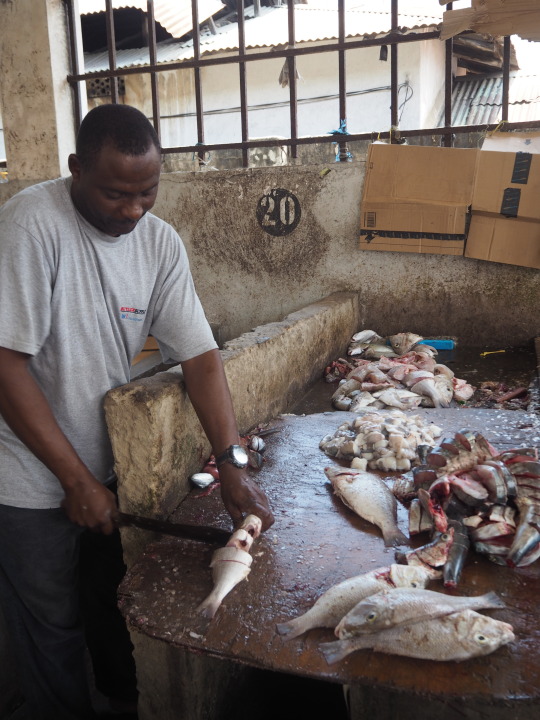




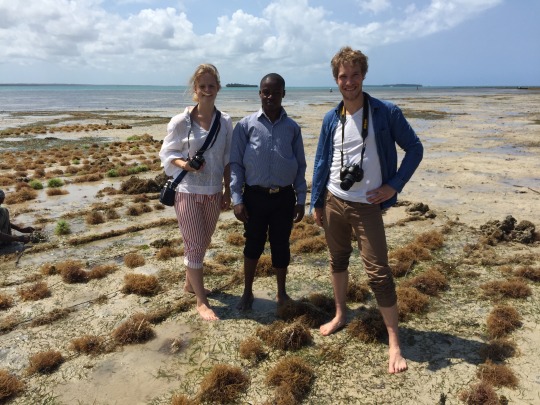
But the most spectacular part of the journey was yet to begin, because we then flew (jaja) to Mafia! This is another big island, 130 km south of Dar, and which is not visited by many people given the high flight costs. Despite the curious name, which is said to derive either from the Yemeni rules from the state of Ma’afir or the Arabic word ‘morfiya’ meaning group and thus archipelago, it was a lovely place to visit. The flight was spectacular, to say the least: in one of those tiny planes with 14 seats, flying over a big river delta called Rufiji, tiny tropical islands (where people actually live, imagine), coral reefs, and I swear I spotted a humpback whale. And guess who got to be the co-pilot!!! Absolutely stunning. Compared to Dar and Zanzibar, Mafia is a very quiet, and I must say quite poor, island. There was one big road from the airport to the other side of the island, big enough for four cars to drive next to each other, but every time we were the only one. We passed thousands and thousands of palm trees, and funnily enough, many of the mud houses had solar panels. While many of the hotels are so exclusive they cost $300 per night, I found a lovely and much more affordable hotel right beside a bay full of sea life, which was, with its diving school and cute bandas (huts), a haven of peace. After a delicious dinner and a good night’s sleep, we were summoned to the ministry first thing in the morning. The gentlemen had not been updated about our arrival, so they wanted to know what we were doing, but they turned out to have a real heart for the island and its marine conservation area. A big part of the island and most of the surrounding waters are a protected marine park, and as a visitor you pay a daily fee for this. We then went to visit another anchovies landing site, bigger and a bit more professional than the one on Zanzibar. And this was so typical: we were put on plastic chairs in a circle, and all the important people from the company joined, and talked at length in Swahili, with some interruptions in English in the meantime. It felt like one of those village meetings, that you so often see in the news or in movies about Africa. Afterwards, we had an hour left so Rik and I swam into the bay and stumbled upon a coral rock with the most beautiful fish swimming around. A brief glimpse of Mafia’s underwater life. It was too short, but I’ll be back! And although I am not entirely sure if fisheries is my new fascination in life, it was extremely interesting and I am very lucky and grateful to have been allowed to join!

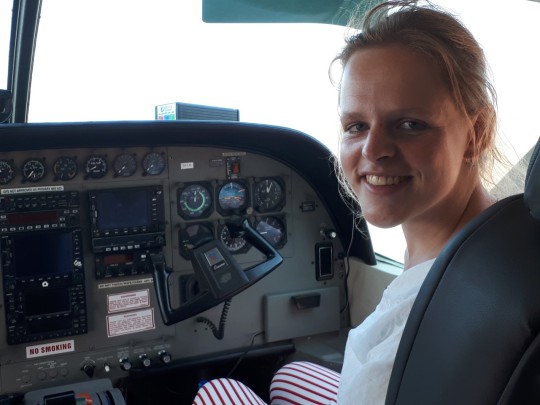


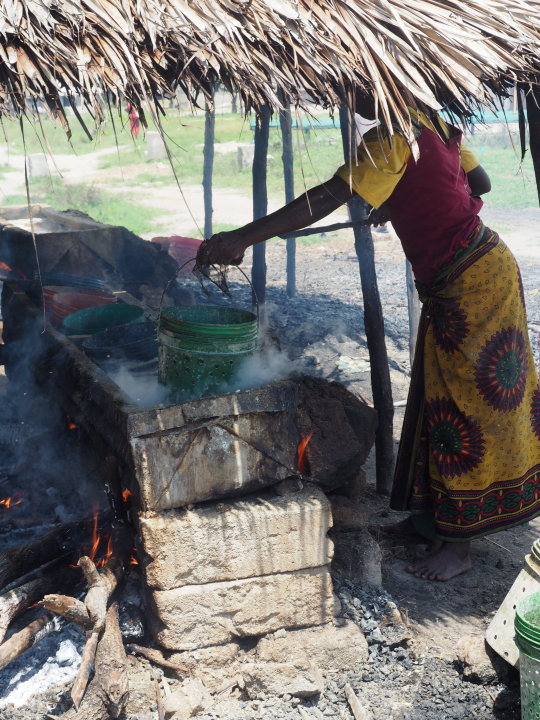


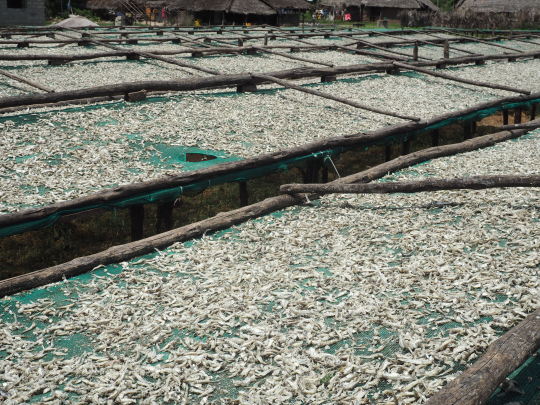
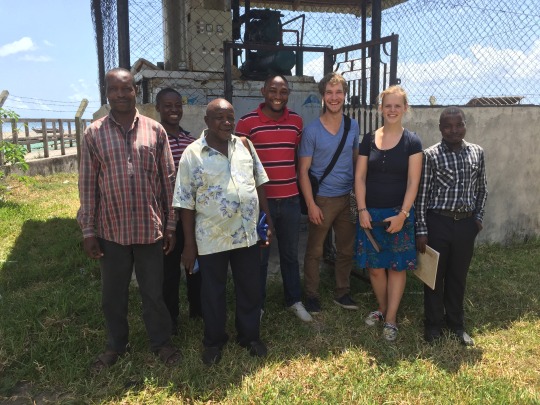
I will force myself to stop here and save the travel adventures for next time. All in all, time flies. Last week the vacancy for my successor was published, which means I am already half way! In December, a second intern specifically for agriculture will come, so I am very excited to get a buddy. This weekend I am going to hike in the mountains (yes of all weekends I chose the most rainy one), so wish me luck. I’ll give you a brief update next week about this and previous travel adventures, before my dad arrives!
Love,
Julie
0 notes
Text
The Funniest Movie of the Year Takes Place at the 'Science Fair'
New Post has been published on https://funnythingshere.xyz/the-funniest-movie-of-the-year-takes-place-at-the-science-fair/
The Funniest Movie of the Year Takes Place at the 'Science Fair'
The top prize is announced at the 2012 Intel International Science and Engineering Fair, and then-15-year-old Jack Andraka learns that he won for his work on the early detection of pancreatic cancer. It is beautiful, shocking, hilarious pandemonium.
His Bieberesque mop of brown hair billows as he explodes out of his seat like a Jack-in-the-box, his limbs extending into a perfect star shape, each extremity perhaps stretched even longer by his euphoria.
What follows is a full-body emotional meltdown. His face contorts as if altered by Edvard Munch. He runs down the aisle to claim his prize. No, not runs. Skips. Flits? Floats? His hands curl in fists as he unconsciously pumps his arms with each step, flapping as if trying to take flight—the only possible physical reaction befitting the sheer amount of joy the teenage genius feels.
He is screaming—shrieking—like a One Direction fan in the front row of a concert. He is screaming like it’s August 1965 and he’s at Shea Stadium watching The Beatles. He is screaming for himself.
Rightfully so.
Jack Andraka is a superstar in his own right, one of many we meet in the documentary Science Fair, which is in theaters now. As Jack’s win in the opening scene proves—you can watch it in the trailer below—it is perhaps one of the most surprisingly funny films released this year. (To wit, it took home the audience prize at both the Sundance and SXSW Film Festivals.)
Directed by Cristina Costantini and Darren Foster, the National Geographic Films documentary shadows a handful of the most intelligent young scientists, inventors, inquisitors, and experimenters in the world as they train for their Olympics: a trip to the International Science and Engineering Fair. The result is like being a fly on the wall for the making of a Christopher Guest movie.
These are some of the most brilliant young minds in the world—the filmmakers follow students from American magnet schools, a village in rural Brazil, and an enterprising inventor from Germany. Their personalities, which you might not guess if you only remember the reserved science geeks tucked away in quiet corners of your own high school cafeteria, turn out to be as big as their minds.
“Teenagers have this amazing quality of figuring out who they are in real-time, but then science fair kids have a whole different quality, which is they’re brilliant,” Costantini says. “They’re going to be the scientific leaders of tomorrow, but they’re also just teenagers.”
There’s Harsha, a senior at Kentucky’s duPont Manual High School, a magnet school known for its STEM program. He’s the drill-and-kill taskmaster for his group project with friends Ryan and Abraham. In one scene, he’s berating them to be more prepared for their presentation. In the next, he’s in the car blasting trap music. “Harsha only listens to trap music, which I didn’t see coming,” Ryan laughs. When we see the trio on the plane to Los Angeles for ISEF, Ryan and Abraham are passed out and miserable; their prom was the night before.
Their classmate Anjali is a prodigy in her own right, who speaks with the plucky, unapologetic confidence of a member of the YouTube generation. Whether she’s throwing shade at the size of one of her trophies, speaking truth to the gender bias that comes with her success and aptitude, or navigating the politics of science fair competitions with blazer-wearing certitude, she’s a trip.
Robbie, who goes to a small high school in West Virginia, is a math genius who scavenges junkyard to build the computers from which he writes revolutionary algorithms. But nothing about his personality reflects the typical science fair student, or even a student who fits into the traditional academic framework. There’s his bright-color, bold-pattern wardrobe of flashy button-up shirts, or the fact that he’s nearly failed out of high school despite his irrefutable smarts. His hope is that a win at ISEF could help his poor college prospects, due to his grades.
“They’re going to be the scientific leaders of tomorrow, but they’re also just teenagers.”
— ‘Science Fair’ co-director Cristina Constantini
And halfway around the world there’s Myllena and Gabriel, who live in one of the poorest states in Brazil and whose research is inspired by their desire to do something to stave off the health crisis ravaging their community, by identifying a protein that could inhibit the spread of Zika. Attending ISEF means the trip of a lifetime from Brazil to Los Angeles, but also a platform to perhaps escape the poverty of their hometown, as well as save lives.
“I think there’s a temptation sometimes when you’re making a film about science to make these kids seem superhuman,” says Foster. “Obviously they have some brilliance to them, but at the end of the day, they’re just teenagers.”
Science Fair is a personal project for Costantini. A self-proclaimed “dweeby kid growing up in a sports-obsessed high school in Wisconsin,” it wasn’t until she competed herself at the ISEF in 2004 that she felt like she had found her tribe. “I was finally validated for my ideas,” she says. “At a young age, that was really important. It really changed who I was.”
The sense of ISEF as a haven is one of Science Fair’s most endearing threads, illustrating the transformative power of gathering misfits in a shared space of understanding and appreciation. In the Rudolph the Red-Nosed Reindeer film, the misfits saved Christmas. In Science Fair, they may just save the world.
You see this most poignantly through the story of Kashfia. She is the only Muslim girl at her sports-obsessed high school in Brookings, South Dakota. There is no science program to speak of; she has to ask the school’s football coach to serve as her science fair mentor. His blank, silent stare as she explains her project to him speaks volumes. She’s placed at international science fairs before, and didn’t get so much as an announcement about her success at her school. (Light spoiler here…) When she scores a major prize at the end of the film, her victory goes unmentioned again.
“It’s heartbreaking,” Costantini says. “It’s not just South Dakota, and I’m sure it’s not out of malice. They just don’t know what a big deal this is. I think our priorities as a nation, especially right now, need some help.” Those priorities provide the crucial, though largely unspoken backdrop to the movie, italicizing, for all of its fun and the adorableness of these kids, its resonance and, hopefully, its impact—the “why we need this movie now” of it all.
“Teenagers have this amazing quality of figuring out who they are in real-time, but then science fair kids have a whole different quality, which is they’re brilliant.”
— ‘Science Fair’ co-director Cristina Constantini
These are kids picking up the mantle of science at a time when there’s a palpable feeling that our country, or at least under this administration, is turning its back on science. More, state budgets for science fairs are being slashed in certain parts of the country and at risk in others, meaning the necessary platform for fostering these kids’ interest in and enthusiasm for science might disappear, and with it the innovation and intelligence capital the future of our country needs.
Costantini and Foster struggled with how to address all that in a film like this. “We decided, let’s not saddle these kids with all these political arguments,” Foster says. “Let’s just let these kids be who they are and stand in relief to what’s going on in the country.”
And those kids do stand in stark relief, along with the many superhero STEM women profiled, or the charges of magnetic Long Island teacher Dr. Serena McCalla, who sent nine of her young immigrant students to ISEF, most of whom speak English as a second language.
“It’s hard to do a movie about science and the science fair in America without addressing the contributions of immigrants,” Foster says. “It’s impossible to do it without talking about the contributions of women. It’s also impossible to look at this moment in time and not see how science has slipped as a national priority, especially compared to the time when the science fair first started in this country, which was in World War II, and then in the ’50s and ’60s when we were facing these huge global challenges and we turned to science for answers. Now we live in a political environment where science is undermined and questioned for political gain. All these things came out during the making of the film.”
But the film’s beautiful, beating heart is these kids. What was it like, then, to follow them for so long, from their hometowns all across the world to the awards ceremony at ISEF, where a handful of them took home prizes for their hard work?
“I was weeping,” Costantini laughs. “During the awards ceremony I was roaming around trying to get shots with the camera,” Foster says. “My eyepiece was fogging up a bit…”
Emotion is one thing. But what about the science? Since it might be a question of concern to prospective viewers, we asked the filmmakers themselves: Did you actually understand the kids’ science experiments? They answer in unison, and with a humble chuckle: “No!”
Source: https://www.thedailybeast.com/the-funniest-movie-of-the-year-takes-place-at-the-science-fair
0 notes
Text
The Funniest Movie of the Year Takes Place at the 'Science Fair'
New Post has been published on http://funnythingshere.xyz/the-funniest-movie-of-the-year-takes-place-at-the-science-fair/
The Funniest Movie of the Year Takes Place at the 'Science Fair'
The top prize is announced at the 2012 Intel International Science and Engineering Fair, and then-15-year-old Jack Andraka learns that he won for his work on the early detection of pancreatic cancer. It is beautiful, shocking, hilarious pandemonium.
His Bieberesque mop of brown hair billows as he explodes out of his seat like a Jack-in-the-box, his limbs extending into a perfect star shape, each extremity perhaps stretched even longer by his euphoria.
What follows is a full-body emotional meltdown. His face contorts as if altered by Edvard Munch. He runs down the aisle to claim his prize. No, not runs. Skips. Flits? Floats? His hands curl in fists as he unconsciously pumps his arms with each step, flapping as if trying to take flight—the only possible physical reaction befitting the sheer amount of joy the teenage genius feels.
He is screaming—shrieking—like a One Direction fan in the front row of a concert. He is screaming like it’s August 1965 and he’s at Shea Stadium watching The Beatles. He is screaming for himself.
Rightfully so.
Jack Andraka is a superstar in his own right, one of many we meet in the documentary Science Fair, which is in theaters now. As Jack’s win in the opening scene proves—you can watch it in the trailer below—it is perhaps one of the most surprisingly funny films released this year. (To wit, it took home the audience prize at both the Sundance and SXSW Film Festivals.)
Directed by Cristina Costantini and Darren Foster, the National Geographic Films documentary shadows a handful of the most intelligent young scientists, inventors, inquisitors, and experimenters in the world as they train for their Olympics: a trip to the International Science and Engineering Fair. The result is like being a fly on the wall for the making of a Christopher Guest movie.
These are some of the most brilliant young minds in the world—the filmmakers follow students from American magnet schools, a village in rural Brazil, and an enterprising inventor from Germany. Their personalities, which you might not guess if you only remember the reserved science geeks tucked away in quiet corners of your own high school cafeteria, turn out to be as big as their minds.
“Teenagers have this amazing quality of figuring out who they are in real-time, but then science fair kids have a whole different quality, which is they’re brilliant,” Costantini says. “They’re going to be the scientific leaders of tomorrow, but they’re also just teenagers.”
There’s Harsha, a senior at Kentucky’s duPont Manual High School, a magnet school known for its STEM program. He’s the drill-and-kill taskmaster for his group project with friends Ryan and Abraham. In one scene, he’s berating them to be more prepared for their presentation. In the next, he’s in the car blasting trap music. “Harsha only listens to trap music, which I didn’t see coming,” Ryan laughs. When we see the trio on the plane to Los Angeles for ISEF, Ryan and Abraham are passed out and miserable; their prom was the night before.
Their classmate Anjali is a prodigy in her own right, who speaks with the plucky, unapologetic confidence of a member of the YouTube generation. Whether she’s throwing shade at the size of one of her trophies, speaking truth to the gender bias that comes with her success and aptitude, or navigating the politics of science fair competitions with blazer-wearing certitude, she’s a trip.
Robbie, who goes to a small high school in West Virginia, is a math genius who scavenges junkyard to build the computers from which he writes revolutionary algorithms. But nothing about his personality reflects the typical science fair student, or even a student who fits into the traditional academic framework. There’s his bright-color, bold-pattern wardrobe of flashy button-up shirts, or the fact that he’s nearly failed out of high school despite his irrefutable smarts. His hope is that a win at ISEF could help his poor college prospects, due to his grades.
“They’re going to be the scientific leaders of tomorrow, but they’re also just teenagers.”
— ‘Science Fair’ co-director Cristina Constantini
And halfway around the world there’s Myllena and Gabriel, who live in one of the poorest states in Brazil and whose research is inspired by their desire to do something to stave off the health crisis ravaging their community, by identifying a protein that could inhibit the spread of Zika. Attending ISEF means the trip of a lifetime from Brazil to Los Angeles, but also a platform to perhaps escape the poverty of their hometown, as well as save lives.
“I think there’s a temptation sometimes when you’re making a film about science to make these kids seem superhuman,” says Foster. “Obviously they have some brilliance to them, but at the end of the day, they’re just teenagers.”
Science Fair is a personal project for Costantini. A self-proclaimed “dweeby kid growing up in a sports-obsessed high school in Wisconsin,” it wasn’t until she competed herself at the ISEF in 2004 that she felt like she had found her tribe. “I was finally validated for my ideas,” she says. “At a young age, that was really important. It really changed who I was.”
The sense of ISEF as a haven is one of Science Fair’s most endearing threads, illustrating the transformative power of gathering misfits in a shared space of understanding and appreciation. In the Rudolph the Red-Nosed Reindeer film, the misfits saved Christmas. In Science Fair, they may just save the world.
You see this most poignantly through the story of Kashfia. She is the only Muslim girl at her sports-obsessed high school in Brookings, South Dakota. There is no science program to speak of; she has to ask the school’s football coach to serve as her science fair mentor. His blank, silent stare as she explains her project to him speaks volumes. She’s placed at international science fairs before, and didn’t get so much as an announcement about her success at her school. (Light spoiler here…) When she scores a major prize at the end of the film, her victory goes unmentioned again.
“It’s heartbreaking,” Costantini says. “It’s not just South Dakota, and I’m sure it’s not out of malice. They just don’t know what a big deal this is. I think our priorities as a nation, especially right now, need some help.” Those priorities provide the crucial, though largely unspoken backdrop to the movie, italicizing, for all of its fun and the adorableness of these kids, its resonance and, hopefully, its impact—the “why we need this movie now” of it all.
“Teenagers have this amazing quality of figuring out who they are in real-time, but then science fair kids have a whole different quality, which is they’re brilliant.”
— ‘Science Fair’ co-director Cristina Constantini
These are kids picking up the mantle of science at a time when there’s a palpable feeling that our country, or at least under this administration, is turning its back on science. More, state budgets for science fairs are being slashed in certain parts of the country and at risk in others, meaning the necessary platform for fostering these kids’ interest in and enthusiasm for science might disappear, and with it the innovation and intelligence capital the future of our country needs.
Costantini and Foster struggled with how to address all that in a film like this. “We decided, let’s not saddle these kids with all these political arguments,” Foster says. “Let’s just let these kids be who they are and stand in relief to what’s going on in the country.”
And those kids do stand in stark relief, along with the many superhero STEM women profiled, or the charges of magnetic Long Island teacher Dr. Serena McCalla, who sent nine of her young immigrant students to ISEF, most of whom speak English as a second language.
“It’s hard to do a movie about science and the science fair in America without addressing the contributions of immigrants,” Foster says. “It’s impossible to do it without talking about the contributions of women. It’s also impossible to look at this moment in time and not see how science has slipped as a national priority, especially compared to the time when the science fair first started in this country, which was in World War II, and then in the ’50s and ’60s when we were facing these huge global challenges and we turned to science for answers. Now we live in a political environment where science is undermined and questioned for political gain. All these things came out during the making of the film.”
But the film’s beautiful, beating heart is these kids. What was it like, then, to follow them for so long, from their hometowns all across the world to the awards ceremony at ISEF, where a handful of them took home prizes for their hard work?
“I was weeping,” Costantini laughs. “During the awards ceremony I was roaming around trying to get shots with the camera,” Foster says. “My eyepiece was fogging up a bit…”
Emotion is one thing. But what about the science? Since it might be a question of concern to prospective viewers, we asked the filmmakers themselves: Did you actually understand the kids’ science experiments? They answer in unison, and with a humble chuckle: “No!”
Source: https://www.thedailybeast.com/the-funniest-movie-of-the-year-takes-place-at-the-science-fair
0 notes